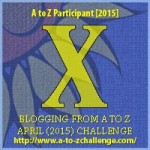
Disclaimer: Perhaps “R-Rated” would be a more appropriate description than “X-Rated”…but I had a different topic idea for “R” (Random Order), and needed one for “X”…so here we are.
This is one definite difference between story slams and traditional storytelling (at least at the public slams I’ve been to): the people up on stage seem to feel very free to use profanity and swearing in their stories.
I have been to 7 story slams. Two were at storytelling conferences (the 2014 National Storytelling Conference in Phoenix, and last weekend’s Northlands Storytelling Confabulation in Lake Geneva, WI); and the other 5 were what I sometimes call “public story slams” (to differentiate them from slams held at storytelling conferences), where tickets are bought by anybody from the public, and the people telling stories on stage may or may not have encountered the art of oral storytelling before. There is a different character to the public slams as contrasted with the conference slams (and with most – not all, but most – traditional storytelling).
And one expression of that different character is the common use of profanity.
In all 5 of the public story slams I have attended, swearing as part of one or more stories was the case. And what I observed ran the gamut:
- Some stories contained no profanity.
- Some had a little bit that just seemed an authentic expression by the teller for that phrase and moment of the story.
- Some used more profanity, and more pointedly, highlighting it in the context of the story for emotional effect, sometimes comic.
- Some salted it fairly liberally throughout.
- I can think of at least 3 times where the person on stage laced large amounts of lots of kinds of profanity and swearing throughout the story, piling it on and spewing it forth so that it seemed they were doing it just because they could. And to that I say: Ick. I am not a fan.
Perhaps at another time and in another blog post or two I may explore this at more length: Why this happens; what elements or circumstances or contexts may make it more appropriate or less appropriate; why one might care; etc.
And in non-slam storytelling, there are certainly times that swearing is part of a given story, and there is more freedom and inclination for this among those storytellers and storytelling events that are intentionally for adult audiences, of course – and lots could be explored there.
But for this short “X” entry in the A-Z Daily Blog Challenge, I’ll just make the observation (with the one judgment statement in point number 5, above) that it appears significantly more prevalent a part of slam storytelling.
If you’ve been to story slams, what has your observation of use of profanity been? And what is your opinion of it?
Thanks for reading – Pam

Leave a Reply